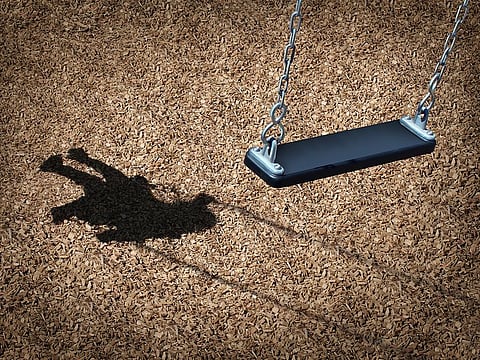India’s Missing Children: Urgent Action Needed
Job of saving children is our collective responsibility. The state alone cannot handle it

Some months ago, I was shocked when an elderly friend called to request some money. No, it was not his asking me for money that disturbed me, but the reason behind it. He didn’t want the money for himself. He wanted the money for his house help, whose life was going through a crisis. I expected the usual contingency —illness, death in the family, daughter’s marriage, or some similar emergency.
No poor family in India is too far off from such crises. But what I heard was unexpected and disturbing. “If she doesn’t receive the dole, her daughter may be trafficked to pay off a debt.” “What?” I responded with shock and disbelief. “Yes,” he replied calmly. “Every day children go missing. They are mostly from our poorest sections, from the slums and bastis of the national capital. Many girls are below fifteen.”
According to my friend, there are procurers on the prowl, marking their prey. They make their move when the time is opportune. Sometimes, the child is lured with promises of modelling jobs, even roles in Bollywood. At other times, the predator will befriend the target, showing some small kindness or luring her with gifts. Then the unsuspecting child would be plied with a drugged soft drink and abducted.
In the worst cases, the guardians themselves give up their wards out of some dire financial necessity. It is amazing how easy it can be, with many of these children already orphans or extremely vulnerable.
Waiting to be picked up
As one activist put it, “20 million children are either orphans or are homeless or they happen to be separated from their families and parents. I prefer to call them ‘nowhere children.…’” Un- or undereducated or mistreated by their family members because of penury or lack of opportunities, these innocents are sitting ducks, so to speak, waiting to be picked up.
That is how I began to do some research on this topic. I found that each day the newspapers report missing children. Often with their photos and a statement from the police that sincere efforts are underway to trace the missing child. Looking at their faces, even in the grimy newsprint, makes one want to cry.
They look so defenceless, so incapable of imagining the evil that might have befallen them. Despite efforts by the central and state authorities, as well as well-recognized non-governmental organisations, the number of missing children has only been increasing year after year, especially after the Covid19 pandemic.
In 2019, for example, for which the figures by the National Crime Record Bureau (NCRB) were recently released, some 73,138 children went missing. This was nearly 9% higher than the previous year’s figure of 67,134.
Even for a country of 1.4 billion, with over 200,000 missing persons reported each year, this is a distressing high number when it comes to children. A child goes missing in India every 7.8 minutes. And this is as per the official statistics. The real number, given how many missing children are un- or underreported is likely to be much higher.
Thankfully, a good number of these children are found and reunited with their families or rehabilitated through state agencies or NGOs. Some police departments, such as Delhi’s, have announced fast-track promotions and other incentives to police personnel who find or recover missing children.
But even in Delhi, nearly 50% of these children are never found. Most of these children are beaten, starved, and abused, ending up as forced labourers, sex workers, or become victims of other forms of exploitation and degradation for decades.
Heinous and inhuman crime
When it comes to India’s sex workers, the Supreme Court recently recognised their profession as a valid occupation or form of gainful work. This will save them from being harassed by the law or hounded by society. But what about those who have been forced into the flesh trade and remain there under duress? Even if sex work is recognised, the trafficking of human beings, especially children is one of the most heinous and inhuman crimes known to humanity.
After several consciousness-raising campaigns, including the Ministry of Women and Child Development Integrated Child Protection Scheme in 2009 and the Supreme Court’s 2013 Standard Operating Procedures (SOPs) to tackle with missing children, there is a national portal and for reporting and tracing missing children including an Integrated Child Protection Scheme (ICPS).
Digital tools such as “TrackChild” and other child-monitoring software tools and portals, including face recognition, have been developed. In addition, the Juvenile Justice laws and the Protection of Children from Sexual Offences (POCSO) Act of 2012, as well Child Protection Services (CPS) of the Ministry of Women and Child Development, are meant to provide legal safeguards to protect children.
But none of these measures goes far enough. The number of missing or stolen children, who constitute the future of the country, keeps going up. What can be done? For starters, in highly policed and politically sensitive cities like Delhi or Mumbai, there should be a concerted drive to apprehend procurers and offenders.
These can be easily identified if the police are more vigilant. There should be periodic raids on points of exchange or sale of such children. This ghastly trade should itself become unprofitable and ruinous to those who indulge in.
What about my friend’s house help? Debt paid, her girls are safe now. But for how long—unless, as a society, we do something about it?
The job of saving our children cannot be left only to the state or law enforcement authorities. It is the responsibility of all of us.
Sign up for the Daily Briefing
Get the latest news and updates straight to your inbox




